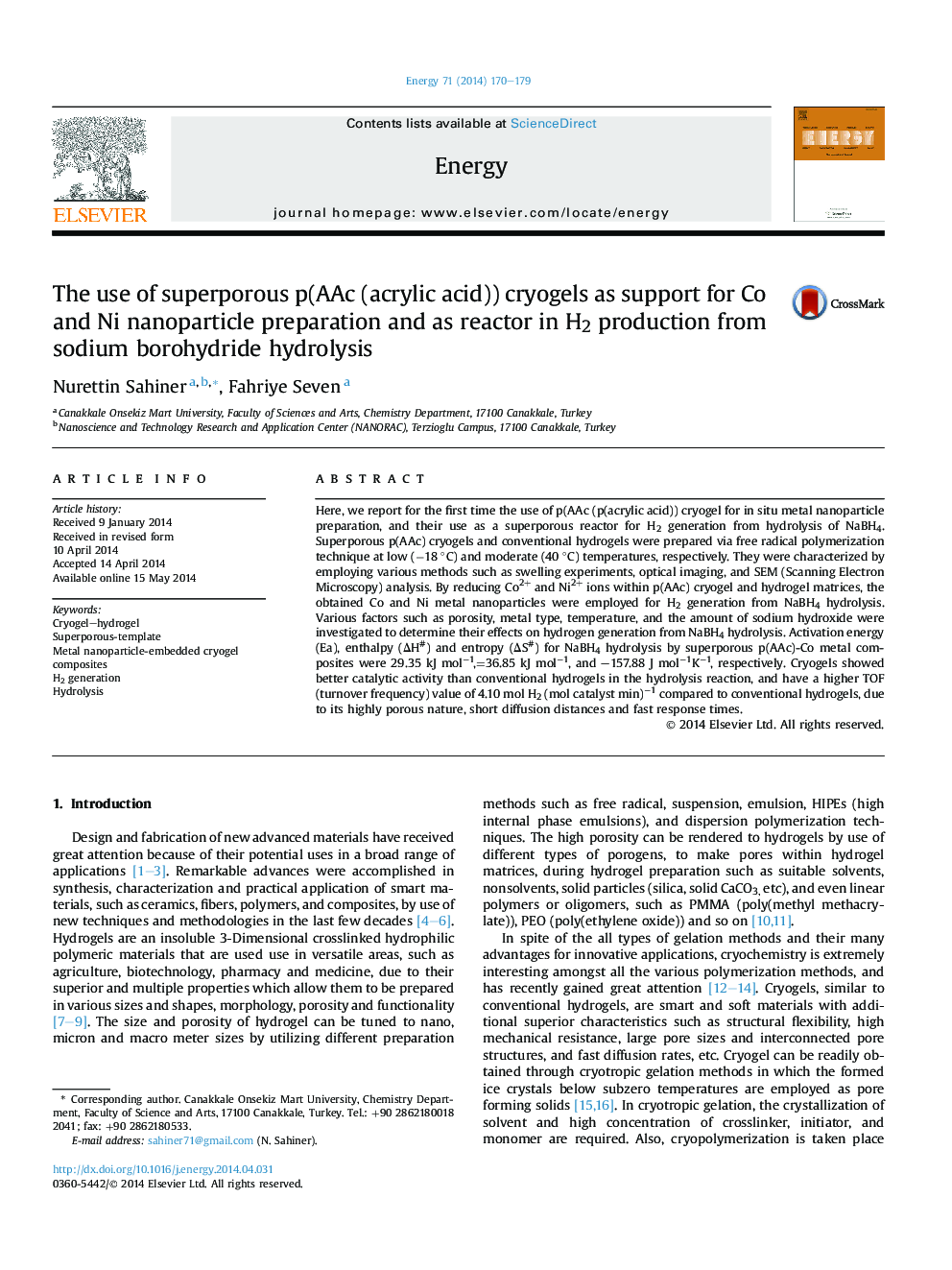| کد مقاله | کد نشریه | سال انتشار | مقاله انگلیسی | نسخه تمام متن |
|---|---|---|---|---|
| 1732383 | 1521475 | 2014 | 10 صفحه PDF | دانلود رایگان |

• Superporous cryogel supports for in situ metal nanoparticle preparation.
• Fast H2 production from chemical hydride hydrolysis by cryogel-M composites.
• Soft, superporous cryogel reactors for energy applications.
Here, we report for the first time the use of p(AAc (p(acrylic acid)) cryogel for in situ metal nanoparticle preparation, and their use as a superporous reactor for H2 generation from hydrolysis of NaBH4. Superporous p(AAc) cryogels and conventional hydrogels were prepared via free radical polymerization technique at low (−18 °C) and moderate (40 °C) temperatures, respectively. They were characterized by employing various methods such as swelling experiments, optical imaging, and SEM (Scanning Electron Microscopy) analysis. By reducing Co2+ and Ni2+ ions within p(AAc) cryogel and hydrogel matrices, the obtained Co and Ni metal nanoparticles were employed for H2 generation from NaBH4 hydrolysis. Various factors such as porosity, metal type, temperature, and the amount of sodium hydroxide were investigated to determine their effects on hydrogen generation from NaBH4 hydrolysis. Activation energy (Ea), enthalpy (ΔH#) and entropy (ΔS#) for NaBH4 hydrolysis by superporous p(AAc)-Co metal composites were 29.35 kJ mol−1,=36.85 kJ mol−1, and –157.88 J mol−1K−1, respectively. Cryogels showed better catalytic activity than conventional hydrogels in the hydrolysis reaction, and have a higher TOF (turnover frequency) value of 4.10 mol H2 (mol catalyst min)−1 compared to conventional hydrogels, due to its highly porous nature, short diffusion distances and fast response times.
Journal: Energy - Volume 71, 15 July 2014, Pages 170–179